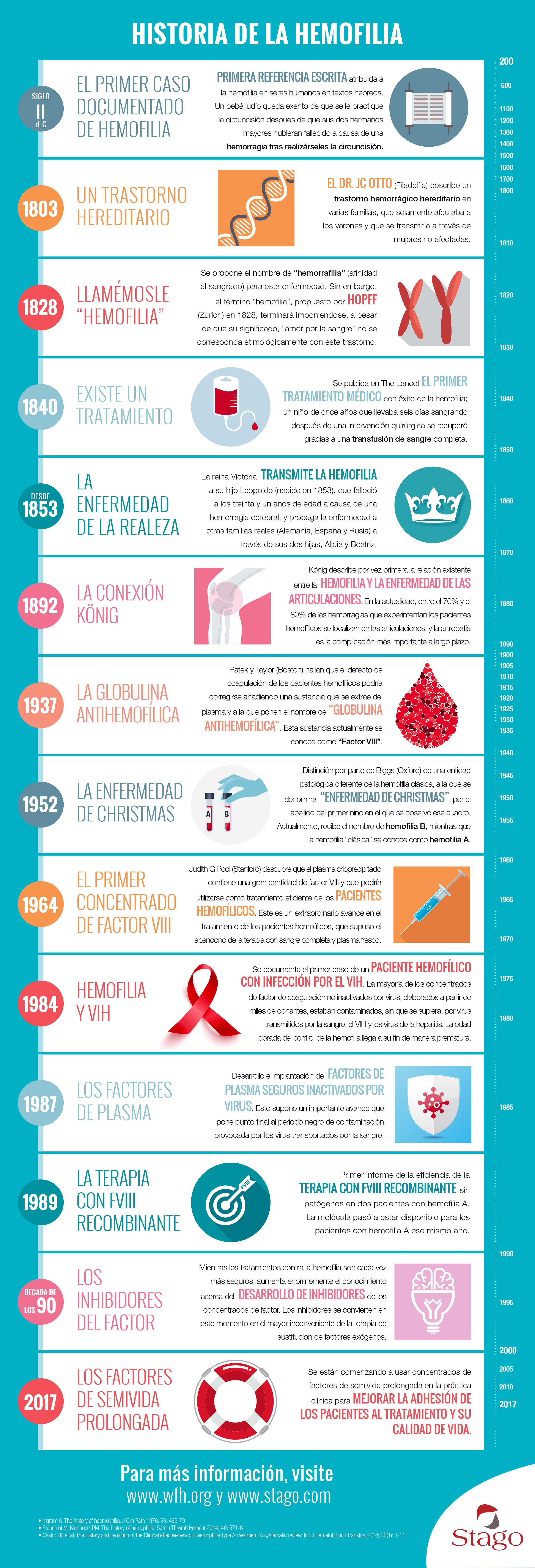
200 d.C

El primer caso documentado de Hemofilia
Primera referencia escrita atribuida a la hemofilia en seres humanos en textos hebreos. Un bebé judio queda exento de que se le practique la circuncisión después de que ses dos hermanos mayores hubieran fallecido a causa de una hemorragia tras realizárseles la circuncisión.
1803
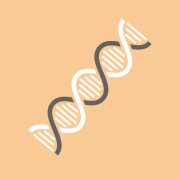
Un trastorno hereditario
El Dr.JC Otto (Filadelfia) describe un trastorno hemorrágico hereditario en varias familias, que solamente afectaba a los varones y que se transmitía a través de mujeres no afectadas.
1828
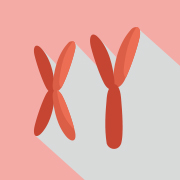
Llamémosle "Hemofilia"
Se propone el nombre de "hemorrafilia" (afinidad al sangrado) para esta enfermedad. Sin embargo, el término "hemofilia", propuesto por Hopff (Zúrich) en 1828, terminará imponiéndose, a pesar de que su significado, "amor por la sangre" no se corresponda etimológicamente con este trastorno.
1840
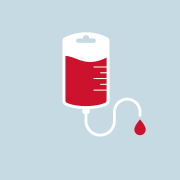
Existe un tratamiento
Se publica en The Lancet el primer tratamiento médico con éxito de la hemofilia; un niño de once años que llevaba seis días sangrando después de una intervención quirúrgica se recuperó gracias a una transfusión de sangre completa.
1853

The royal disease
An American vet observes a large number of deaths through bleeding in cattle that had eaten mouldy sweet clover. The doctor Karl LINK and collaborators identify the molecule responsible in this clover: dicoumarol, the antidote for which is vitamin K.
1892
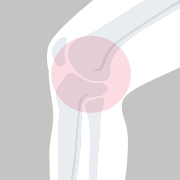
The könig connection
König describes for the first time relationship between haemophilia and joint disease. Today 70-80% of blee- ding in haemophiliac patients occur in the joints and arthropathy is the most important long term complication.
1937
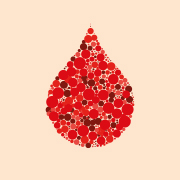
The anti-haemophilic globulin
Patek and Taylor (Boston) find that the coagulation defect of haemophiliac patients could be corrected by adding a substance extracted from plasma, which they call "anti-haemophilic globulin". This substance is actually known as Factor VIII.
1952
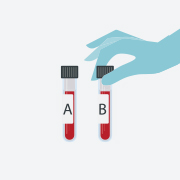
The christmas disease
Distinction by Rosemary Biggs (Oxford) of a disease entity different from classic haemophilia, which has been called "Christmas disease", after the last name of the first child described with the condition. It is now called haemophilia B, while "classic" haemophilia is called haemophilia A.
1964
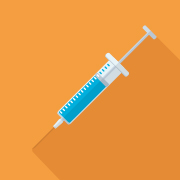
The first factor VIII concentrate
Judith G Pool (Stanford) finds that plasma cryoprecipitate contains a large amount of factor VIII and could be used to efficiently tread haemophiliac patients. This is an enormous step forward in haemophiliac patients’ care, forsaking the use of whole blood and fresh plasma.
1984
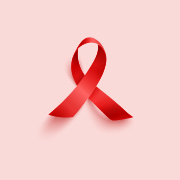
Haemophilia and HIV
First Haemophiliac patient with HIV infection is reported. Most of non-virus-inactivated clotting factor concentrates, made from thousands donors, were unknowingly contaminated by blood-borne viruses, HIV and hepatitis viruses. The "golden era" of haemophilia management is prematurely ended.
1987

The plasma-derived factors
Development and implementation of safe virus inactivated plasma-derived factors. This represents a major breakthrough ending the black period of blood borne viruses contamination.
1989

The recombinant FVIII therapy
First report of the efficiency of pathogen-free recombinant FVIII therapy in two patients with Haemophilia A. The molecule become available for haemophilia A patients in the same year.
1990

The factor inhibitors
While treatments of haemophilia become safer, knowledge about the
development of inhibitor against factor concentrates greatly increases. Inhibitors are now the major drawback of exogenous factor replacement therapy.exploration path of hemostasis.
2017

The prolonged half-life factors
Prolonged half-life factor concentrates are actually being implemented in clinical practice to improve patient's compliance and quality of life.
